Teaching Time Management with ABA
Discover effective strategies for teaching time management with ABA techniques for individuals with autism.
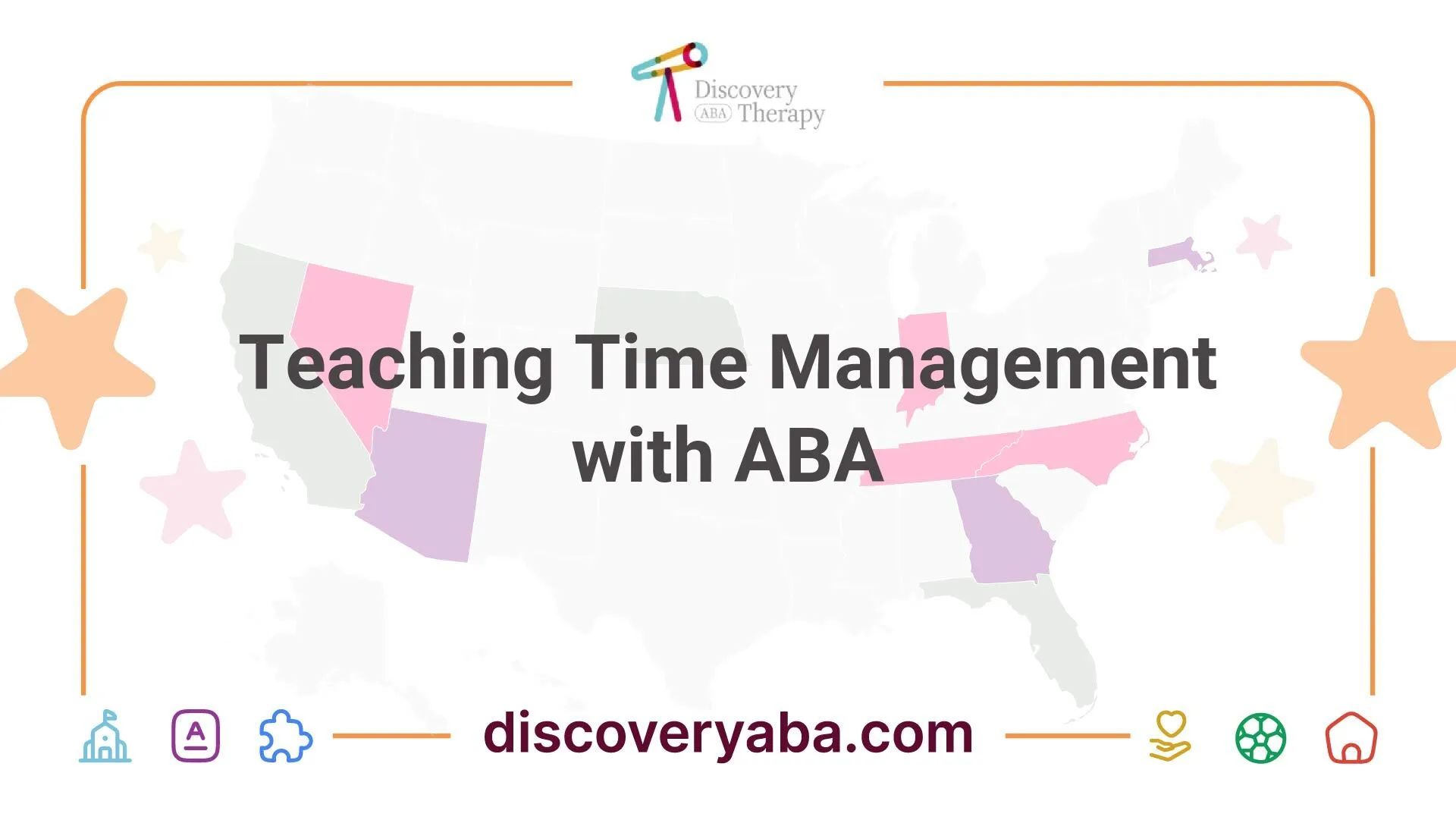
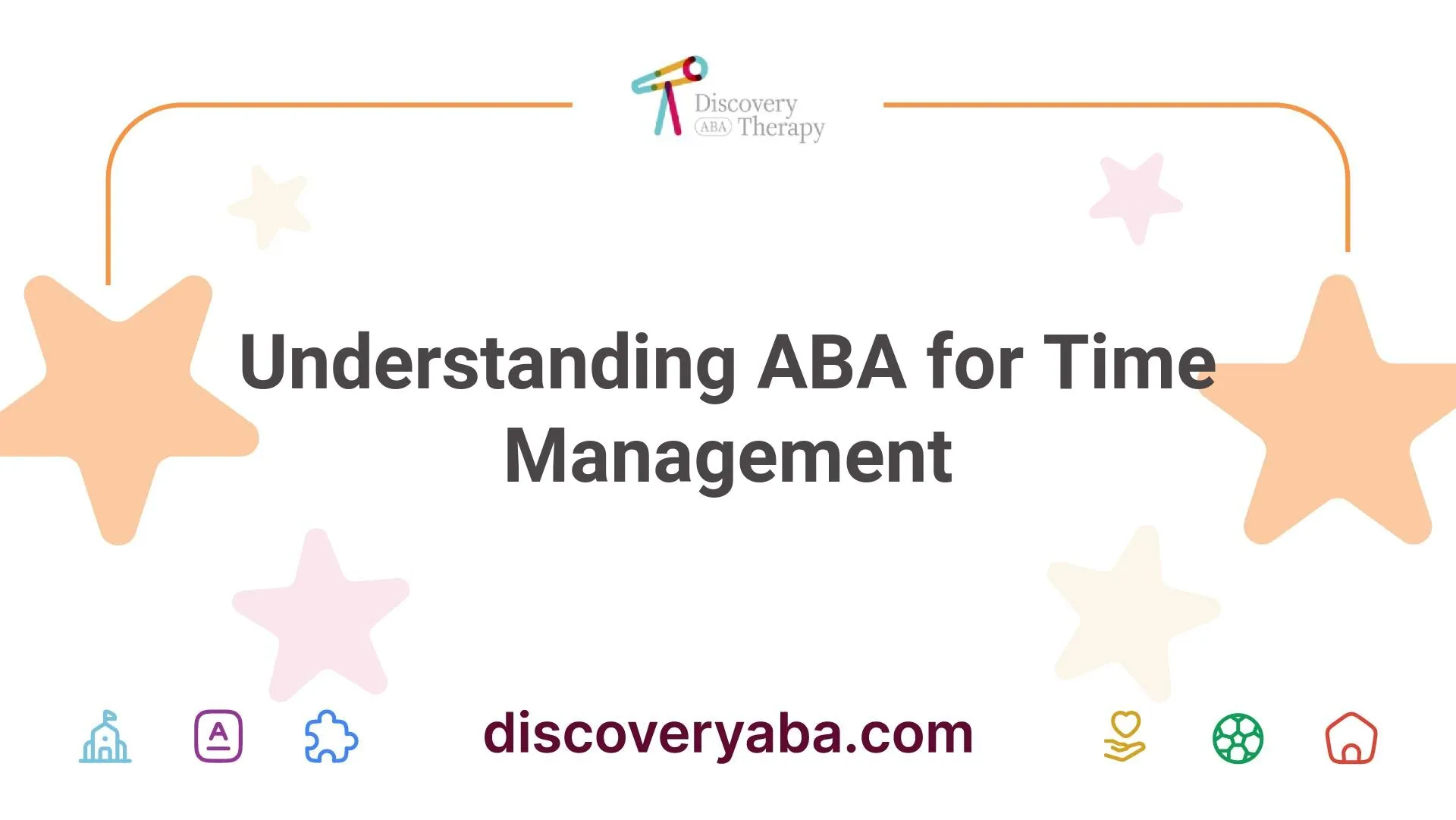
Understanding ABA for Time Management
Applied Behavior Analysis (ABA) is a systematic approach used to understand and improve behavior. This method has shown considerable effectiveness, especially when applied to individuals with autism, including fostering time management skills.
Basics of Applied Behavior Analysis
ABA is grounded in decades of research and is widely recognized as the gold standard of intervention for students with autism. The approach focuses on breaking down complex behaviors into smaller, manageable components, which empowers individuals to develop self-management skills. By using this method, educators and caregivers can teach various skills and reduce behaviors that may interfere with learning and daily life.
The primary goals of ABA include:
This structured approach assists learners in comprehending the reasons and effects of their actions, making it easier for them to manage their time effectively.
Benefits of ABA for Autism Individuals
Implementing ABA techniques provides numerous advantages for individuals with autism, particularly in learning essential time management skills. Some notable benefits include:
BenefitDescriptionEnhanced IndependenceStudents become capable of managing their own time and making decisions without constant supervision.Improved Self-Management SkillsIndividuals learn to apply behavior-change tactics personally, leading to positive behavior adjustments.Customized LearningABA techniques are tailored to meet individual needs, ensuring that strategies are effective for each learner.Positive Behavior SupportThe focus on reducing interfering behaviors allows for a more conducive learning environment.
By recognizing the importance of tailored interventions, caregivers and educators can create effective strategies for teaching time management using ABA methods. The tiered approach that includes universal support and targeted interventions can be particularly beneficial in school settings. For more information on teaching crucial skills, check our article on improving executive functioning with aba.
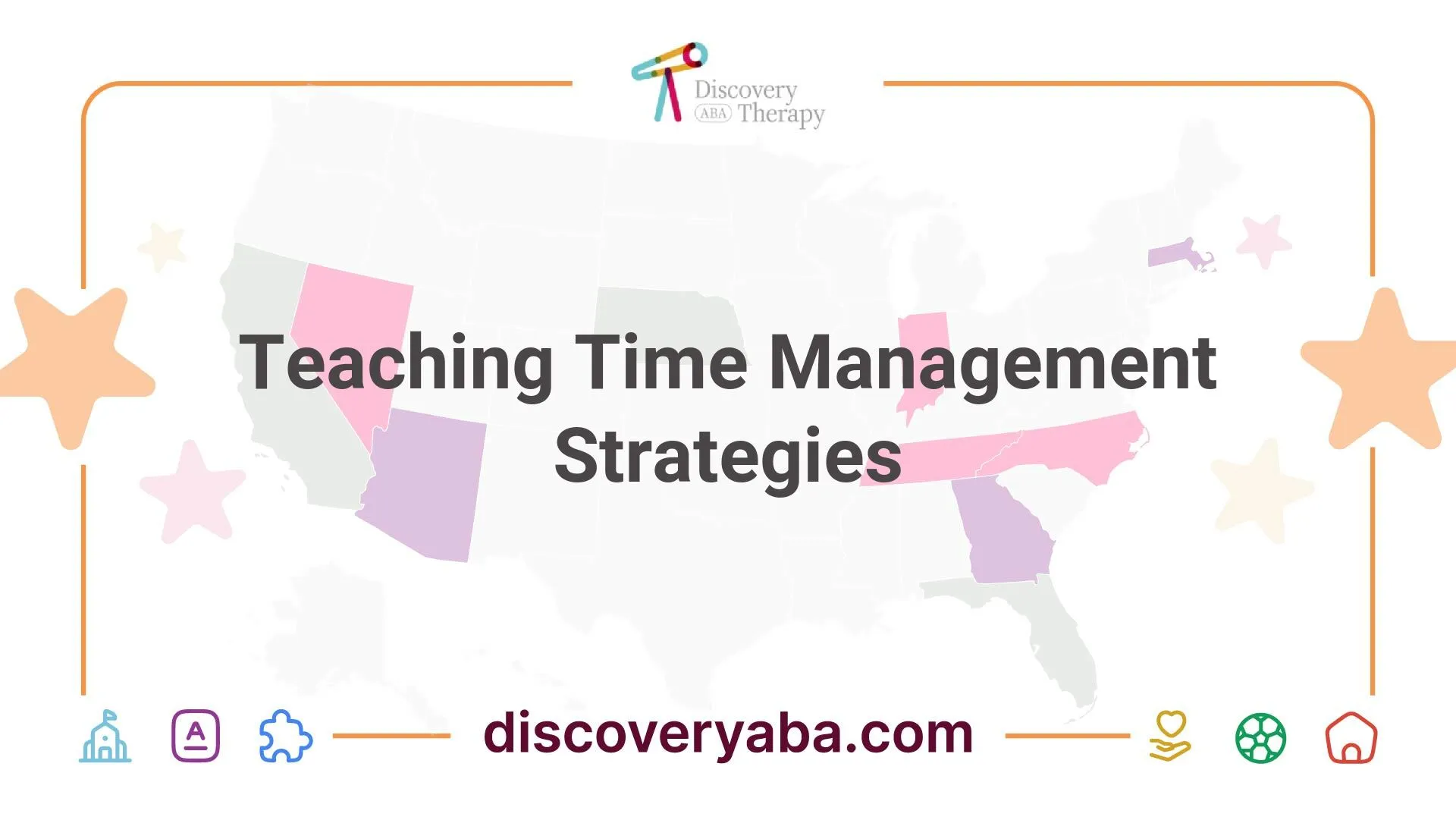
Teaching Time Management Strategies
Effective time management is a crucial skill for individuals with autism. By implementing Applied Behavior Analysis (ABA) techniques, parents and caregivers can help promote these skills through structured teaching strategies.
Clear Instructions and Task Breakdown
Providing clear instructions is a fundamental aspect of teaching time management with ABA. Clear, concise tasks help reduce confusion and increase the likelihood of successful completion. Breaking tasks down into manageable steps further aids understanding and execution.
To illustrate the process of task breakdown, here is an example:
StepInstruction1Write down the assignment.2List the tasks needed to complete it.3Allocate time for each task.4Start with the first task and set a timer.5Mark tasks as completed once finished.
Positive reinforcement should be used to encourage progress at each step of the process. By providing praise or small rewards, it promotes motivation and engagement. Patience, consistency, and effort are essential throughout this teaching process.
Goal Setting and Progress Tracking
Setting goals is vital in teaching time management. Goals provide direction and a sense of purpose, helping individuals understand what they are working towards. It is effective to break larger goals into smaller, achievable steps to avoid overwhelm.
Regularly tracking progress is essential to self-management strategies. Techniques such as check-ins or self-monitoring tools can help individuals visualize their progress over time. For instance, a simple progress tracker might consist of:
GoalSteps CompletedDateHomework3 out of 501/01/2023Chore List2 out of 401/01/2023Project1 out of 701/01/2023
This method allows individuals to see their achievements, which can boost self-esteem and promote continued effort. The combination of goal setting and monitoring not only cultivates independence but also helps in fostering essential self-management skills in individuals with autism [1].
For additional strategies that focus on social skills and emotional recognition, consider exploring teaching social cues with aba and emotional recognition with aba therapy. Integrating these approaches can enhance comprehensive learning and personal growth.
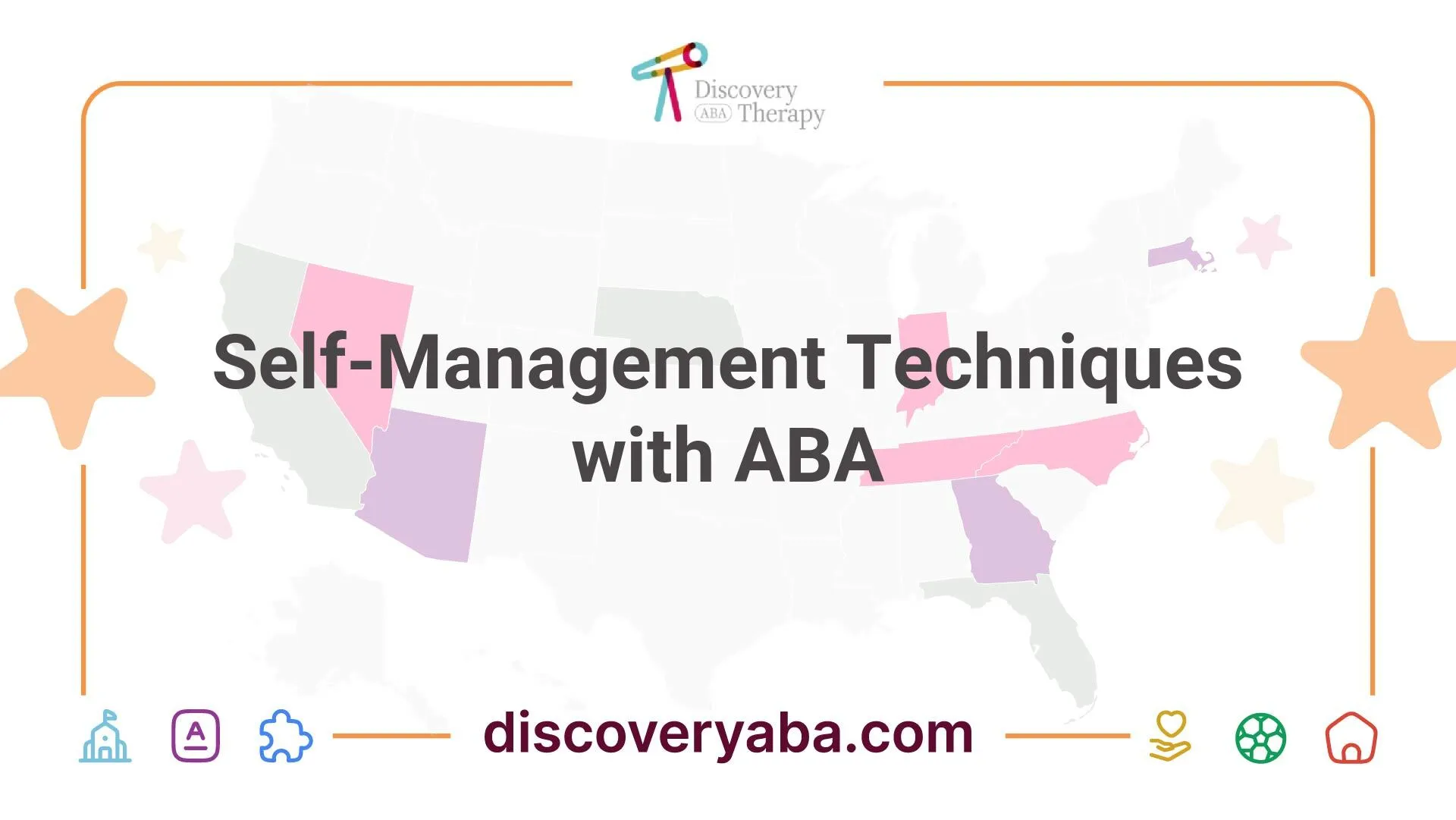
Self-Management Techniques with ABA
Applied Behavior Analysis (ABA) provides effective approaches for fostering self-management skills in individuals with autism. Two key techniques include function-based strategies and the use of social stories.
Function-Based Strategies
Function-based self-management strategies focus on understanding the underlying reasons for problem behaviors through functional behavior assessments (FBA). By identifying these reasons, caregivers can design tailored interventions that not only address problematic behaviors but also promote self-control. These strategies are particularly effective in reducing unwanted behaviors and enhancing self-management skills, as they empower individuals to make choices about their actions [1].
The chart below summarizes the components of function-based strategies:
ComponentDescriptionFunctional Behavior Assessment (FBA)A process used to identify the reasons behind behaviors.Tailored InterventionsCustomized plans that address specific behavioral challenges.Self-ControlTechniques aimed at improving the individual's ability to regulate their own actions.
These strategies lead to improved self-efficacy and give children tools to manage their behavior more effectively.
Social Stories and Skill Development
Social stories, developed by Carol Gray, serve as a valuable tool for teaching self-management skills to individuals with autism and other developmental disorders. They assist learners in understanding expectations, acquiring coping skills, and adopting appropriate behaviors in various situations.
The incorporation of social stories, along with other strategies such as the Hard Times Board—which combines social stories with functional communication training (FCT)—enables learners to replace maladaptive behaviors with adaptive ones.
Key features of social stories include:
FeatureDescriptionEngaging NarrativePresents scenarios that learners may encounter in everyday life.Visual SupportsOften includes images or illustrations to enhance understanding.Coping StrategiesTeaches specific strategies for managing feelings and reactions.
By breaking down complex behaviors into smaller, manageable steps, ABA empowers learners to build prerequisite skills and develop effective self-management techniques at their own pace. For more insights into specific ABA techniques, consider exploring additional resources on teaching social cues with aba or improving executive functioning with ABA through aba for improving executive functioning with aba.
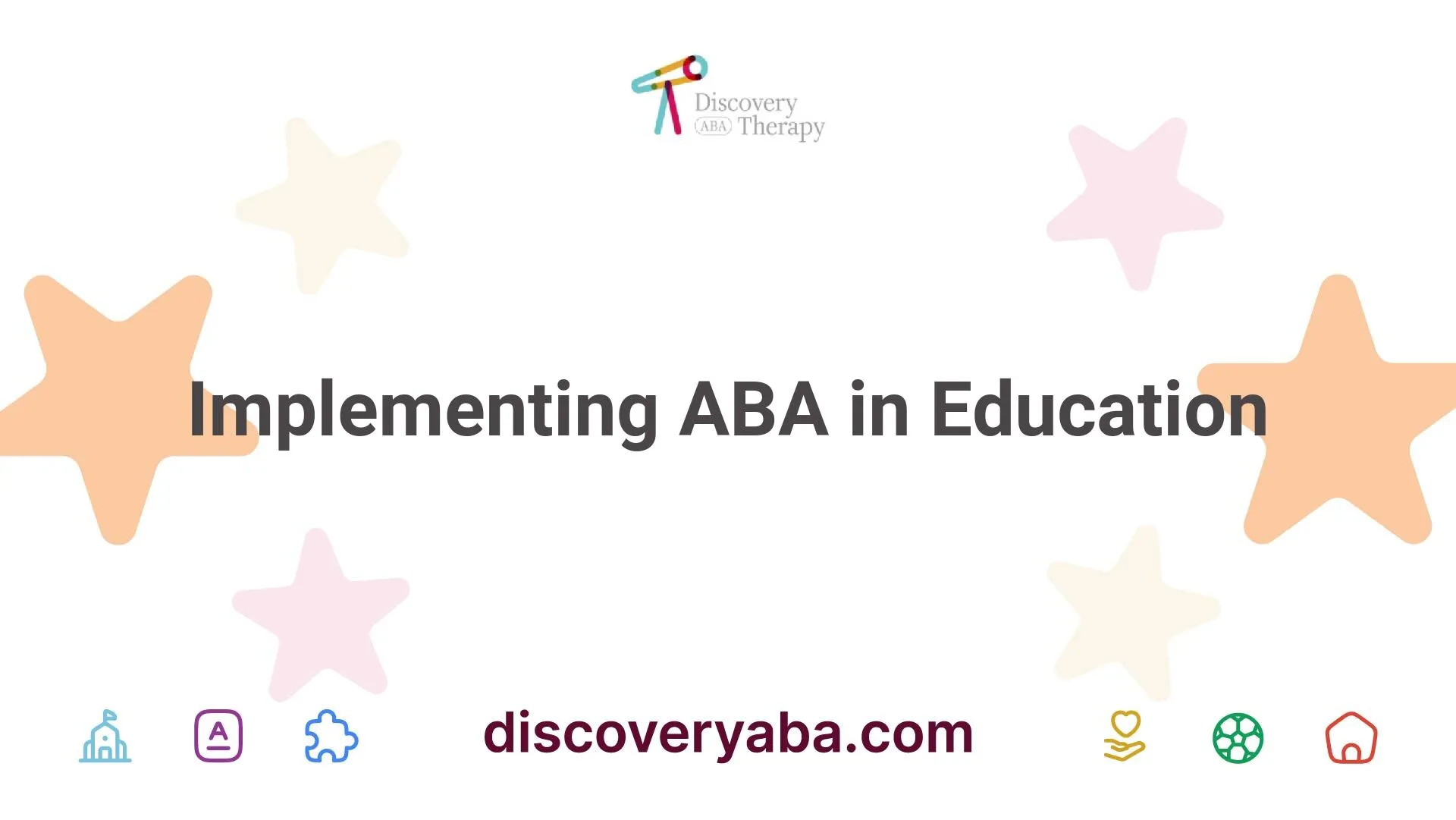
Implementing ABA in Education
Implementing Applied Behavior Analysis (ABA) techniques in educational settings can significantly enhance the learning experience for students with autism. This section will discuss the tiered approach used in schools and the importance of professional development for educators.
Tiered Approach in Schools
The tiered approach to implementing ABA in educational environments includes three levels of support aimed at addressing the diverse needs of learners.
TierType of SupportDescriptionTier IUniversal SupportAvailable to all students, including those with autism. This level includes school-wide behavior support systems, evidenced-based teaching practices, and prevention-based curricula such as Preschool Life Skills (PLS) [2].Tier IITargeted InterventionsDesigned for specific needs of some students with autism. Tier II may involve self-management systems, reinforcement systems, teaching specific skills, and interventions based on ABA principles such as prompting and self-evaluation.Tier IIIIntensive StrategiesProvides focused interventions for students facing significant learning and behavior challenges. This tier often requires a functional behavior assessment and the development of a behavior intervention plan [2].
This structured approach allows educators to tailor interventions and strategies to the specific needs of students, fostering a more inclusive learning environment.
Importance of Professional Development
To effectively implement ABA practices in education, it is crucial for school-based staff to possess a comprehensive understanding of behavioral science. Professional development opportunities play a key role in enhancing this knowledge.
Educators can benefit from further education related to ABA techniques and strategies. Becoming a Board Certified Behavior Analyst (BCBA) also equips professionals with advanced skills necessary for implementing ABA effectively [2]. Ongoing training ensures that teachers and support staff are up-to-date with the latest ABA practices, thereby better supporting students with autism.
Professional development fosters a greater understanding of improving executive functioning with aba and other strategies crucial for teaching time management. This investment in staff training ultimately leads to more successful outcomes for students, as educators become adept at using ABA techniques to address specific behaviors and learning challenges.
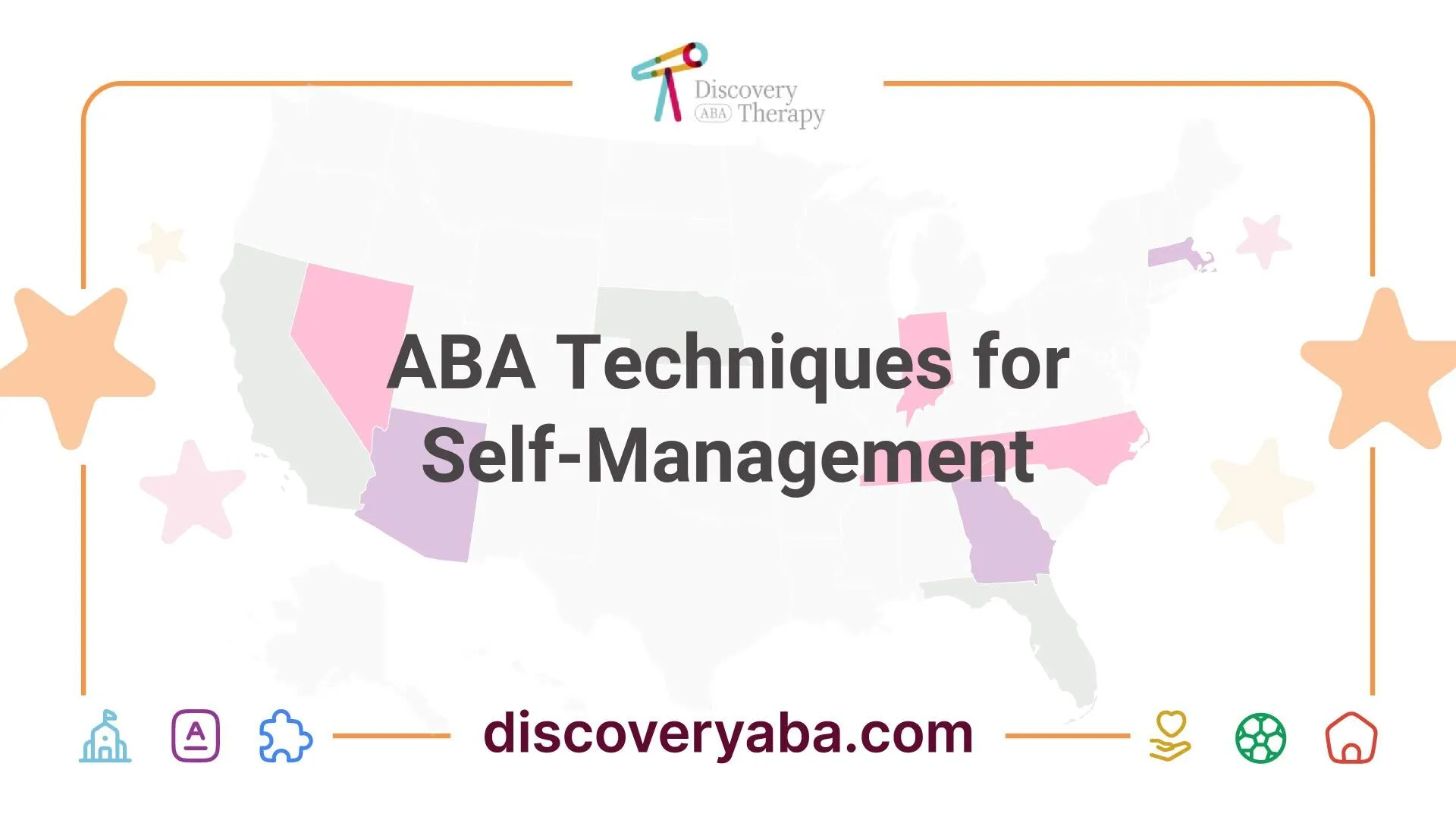
ABA Techniques for Self-Management
Self-management is essential for individuals with Autism, allowing them to better navigate daily situations and achieve personal goals. Applied Behavior Analysis (ABA) offers effective techniques to enhance self-awareness and promote self-management skill development.
Building Self-Awareness
Self-awareness is a crucial component of self-management skills. It enables individuals to comprehend their thoughts, feelings, and behaviors. Developing self-awareness helps in identifying personal triggers, acknowledging limitations, and recognizing areas for growth. This understanding allows individuals to adapt their strategies to tackle challenges effectively.
Self-Management Skill Development
Self-management skills can be further enhanced through function-based strategies derived from Functional Behavior Assessments (FBA). These tailored approaches have demonstrated effectiveness in reducing problem behaviors in children with emotional and behavioral disorders. By providing opportunities for individuals to control their behavior, function-based strategies improve self-efficacy and personal control [1].
The table below summarizes key aspects of building self-awareness and developing self-management skills.
TechniqueFocusBenefitsSelf-awareness trainingUnderstanding thoughts, feelings, behaviorsGreater ability to adapt strategiesFunction-based self-managementTailored strategies based on FBAReduced problem behaviors, improved control
Combining self-awareness with function-based self-management strategies is vital for fostering independence and success in individuals with Autism. These techniques empower learners to understand their behaviors and emotions while enabling them to implement effective strategies to manage their actions. For additional insights on supporting behaviors, consider exploring aba for challenging group behaviors or emotional recognition with aba therapy.
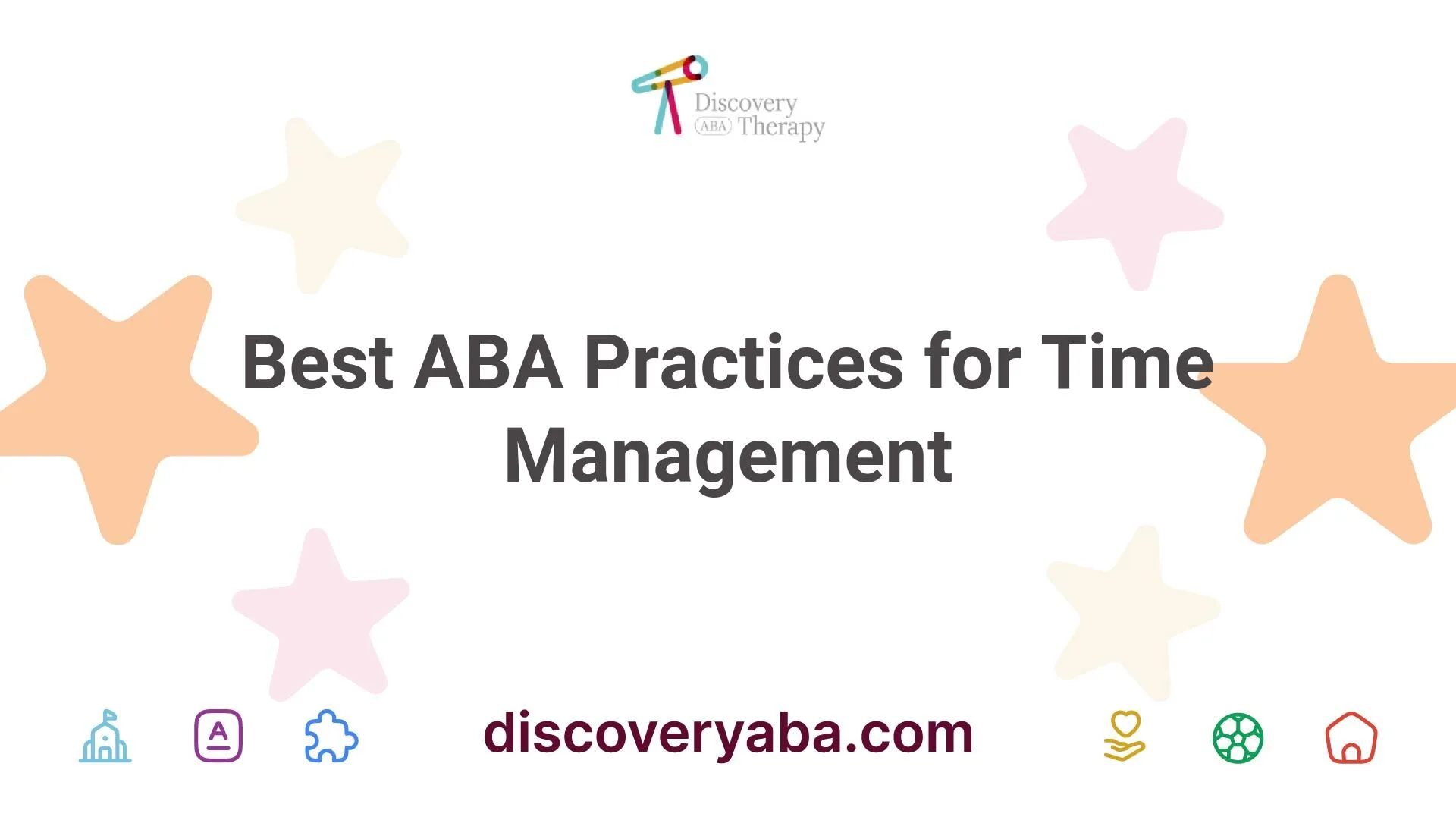
Best ABA Practices for Time Management
Effective implementation of time management strategies for individuals with autism involves the use of best practices from Applied Behavior Analysis (ABA). This section discusses the vital components of data collection and progress monitoring, as well as evidence-based approaches and high-leverage practices.
Data Collection and Progress Monitoring
Data collection is a fundamental aspect of ABA therapy. It involves systematic observation, recording, and measuring behavior, which allows therapists to gather objective data over time. This process is essential for monitoring progress and making data-driven decisions to refine behavior intervention plans based on the individual's unique needs and targeted behaviors [3].
The following methods can be used for effective data collection and progress monitoring:
MethodDescriptionFrequency RecordingCounts how often a specific behavior occurs.Duration RecordingMeasures how long a behavior lasts.Interval RecordingObserves whether a behavior occurs within defined intervals (partial or whole)Permanent ProductsEvaluates tangible outcomes or products resulting from a behavior (e.g., completed assignments).
By regularly analyzing this data, parents and caregivers can evaluate the effectiveness of interventions, adjust strategies, and celebrate successes in time management.
Evidence-Based Approaches and High-Leverage Practices
Implementing evidence-based practices (EBPs) is critical for teaching effective time management strategies to individuals with autism. These practices include setting clear goals, selecting appropriate interventions aligned with defined target behaviors, and monitoring overall implementation quality to measure effectiveness [4]. Examples of EBPs for time management include:
High-leverage practices (HLPs) also play a vital role in supporting time management for individuals with autism. These practices emphasize specific instructional strategies that facilitate skill development, such as:
High-Leverage PracticeDescriptionSmall-Group InstructionAllows tailored teaching within a supportive environment.Functional Behavior AssessmentsIdentifies the reasons behind certain behaviors, informing interventions.Peer-Assisted StrategiesEncourages collaboration between peers to enhance learning outcomes.Organized Learning EnvironmentsCreates structured spaces where time management can be practiced effectively.
By integrating high-leverage practices into ABA implementation, caregivers can foster essential skills like task organization, prioritization, and self-monitoring, ultimately improving time management outcomes for individuals with autism. For more on supporting development in other areas, explore our resources on teaching social cues with aba and other related topics.
References
[2]:
[3]:
[4]:
Does Your Child Have An Autism Diagnosis?
Learn More About How ABA Therapy Can Help
Find More Articles
Contact us
North Carolina, Nevada, Utah, Virginia
New Hampshire, Maine
Arizona, Colorado, Georgia, New Mexico, Oklahoma, Texas
.avif)




































































































